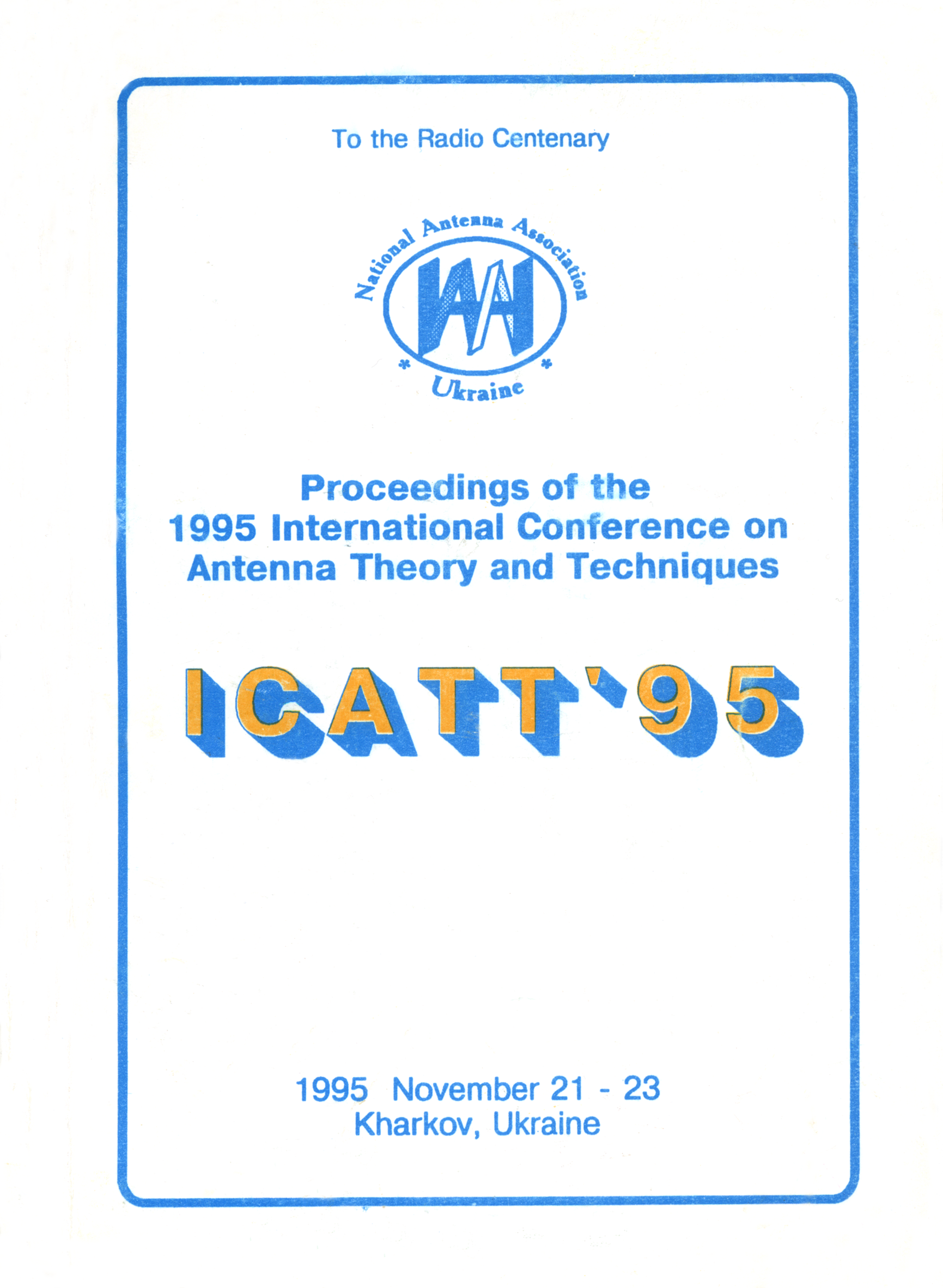Method of stationary phase for the edged surface and amplitude function with an edge singularity
DOI:
https://doi.org/10.1109/ICATT.1995.1234103Abstract
Integral representation of high-frequency electromagnetic fields contains the surface integrals of the following form
* (1)
with k >> 1. If the surface S is an open one (for example, in case of diffraction by a finite-size screen or radiation of an aperture antenna), one can expect the asymptotic of (1) to contain the contributions of the stationary-phase points and of the edge contour Г. The case of S being a flat surface, and Ф and Г being smooth enough functions, has been considered earlier in [1, 2], The method used there enabled the authors to extract out only the contribution of a stationary point of elliptic type.
In the present paper,
a) an integral over an arbitrary non-flat surface is considered, and an asymptotic of (1) is obtained as a sum of contributions from Г and from stationary-phase point of arbitrary type.
b) the edge-contour contribution is evaluated for an amplitude function of the form
*
that is important in engineering problem of diffraction and radiation. Here, F0 is a continuous function, and δ is the distance to Г. The method of the paper (1] based on integral theorems of vector analysis, is not applicable in such a case.
References
M.I. Kontorovich, Y.K. Muravyev, Soviet Physics-Technical Physics, Engl. Transl., 1952, v.22, No. 3.
D.Y. Vakman, Asymptotic methods is linear Radio Engineering, Sov. Radio Publ., Moscow, 1962.

